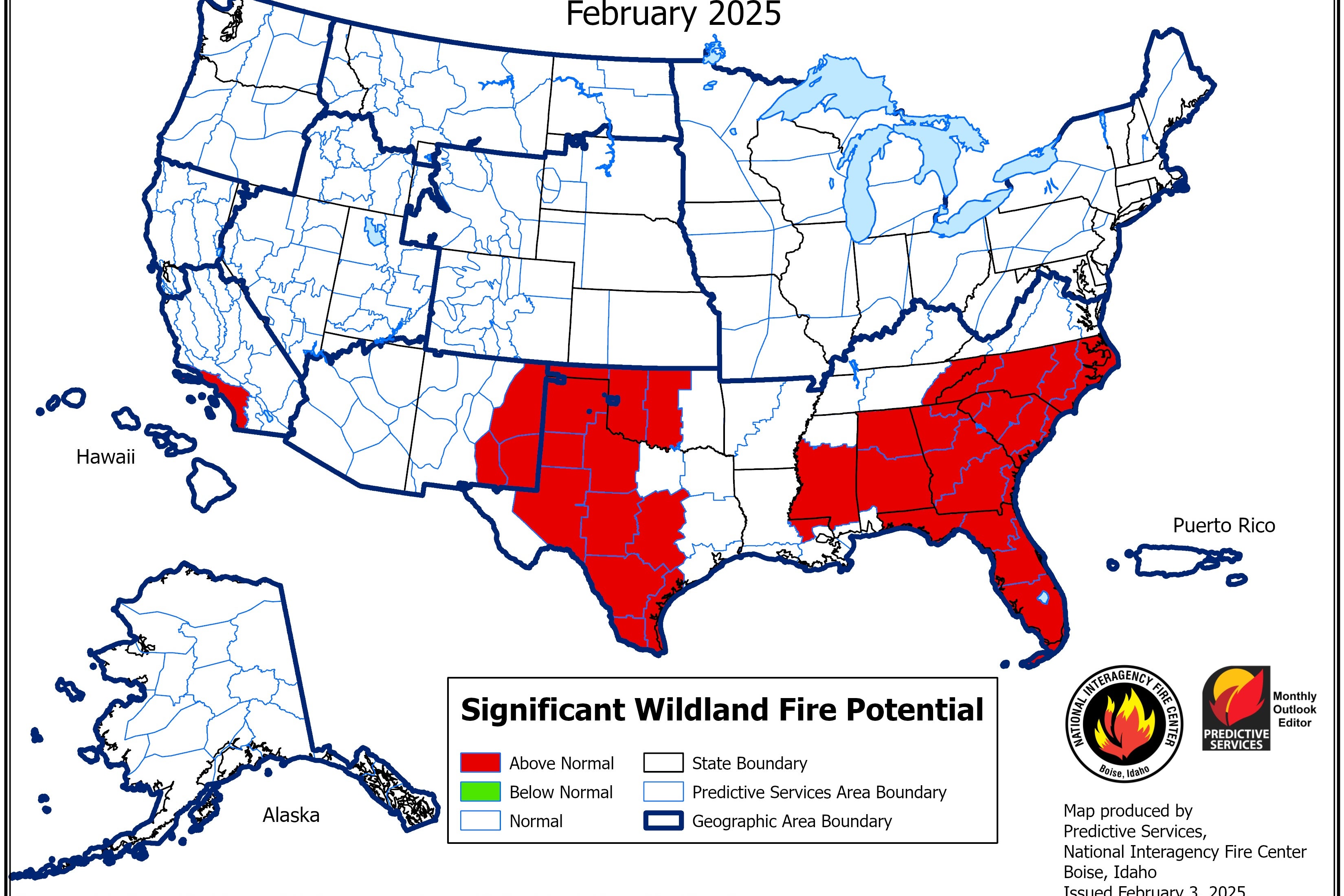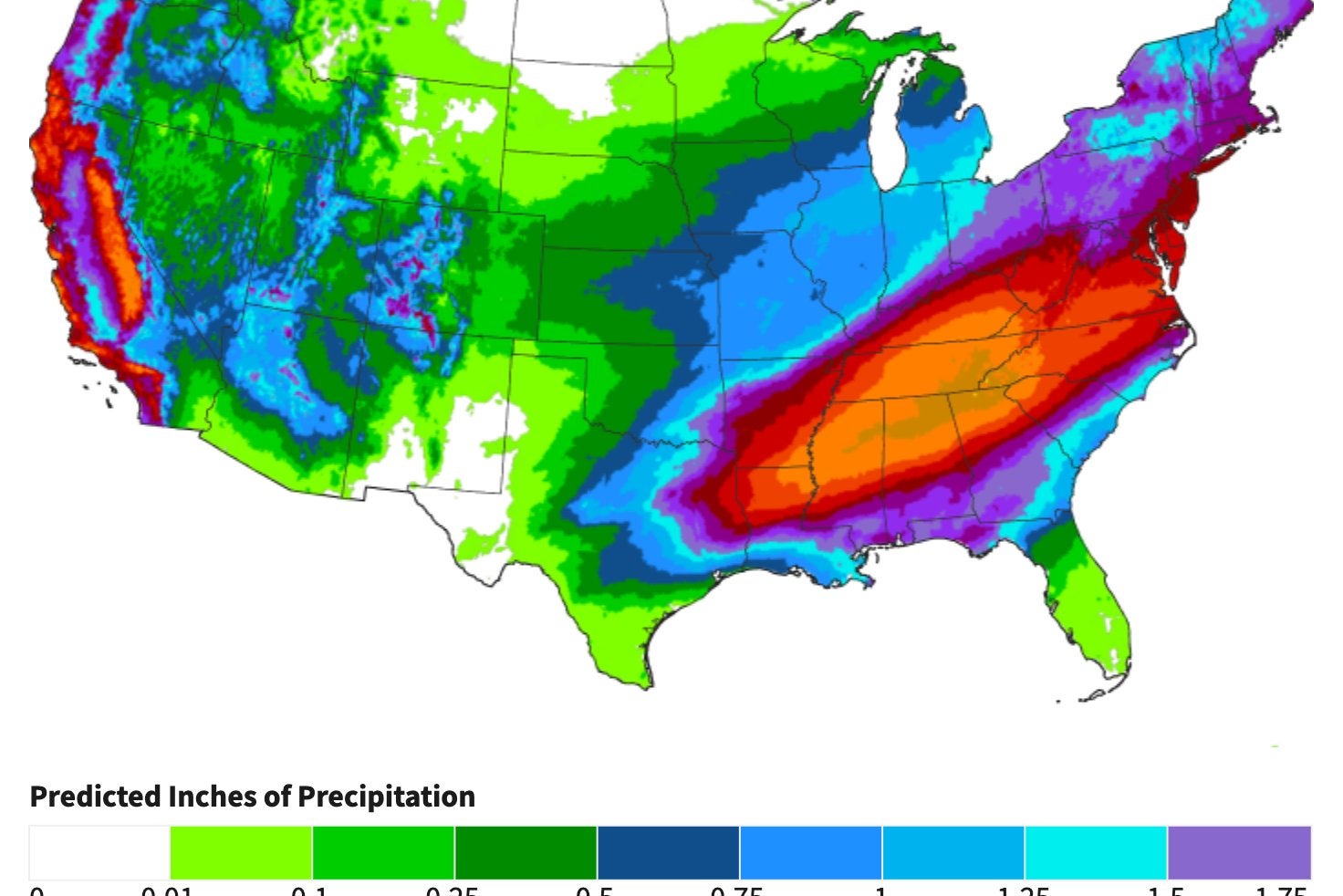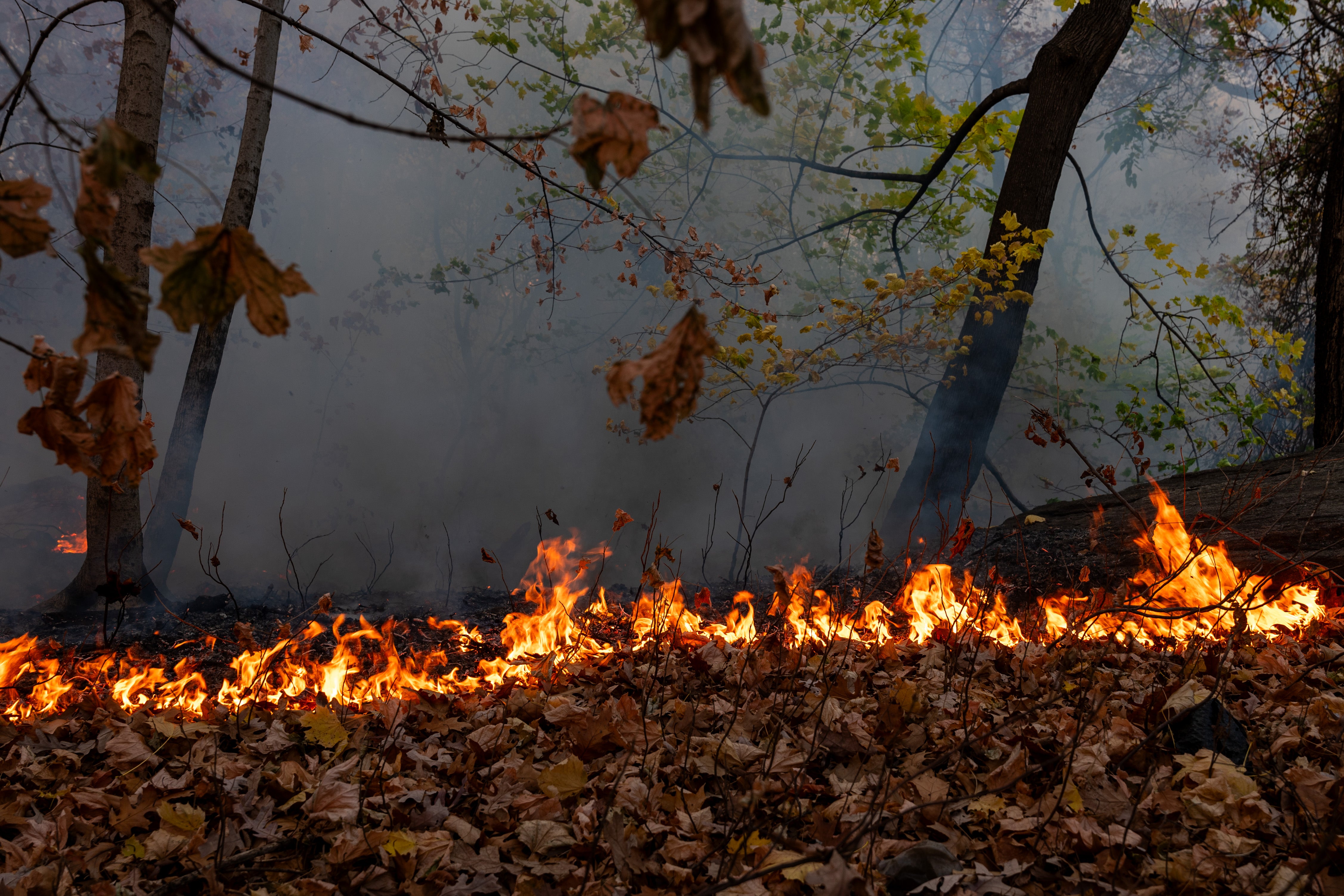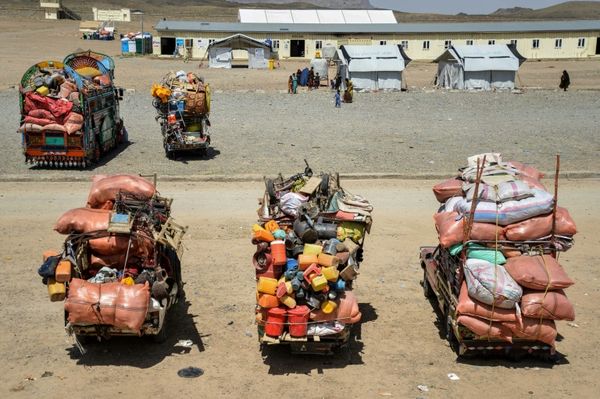Following January’s deadly and destructive California wildfires, the Department of the Interior has released maps notifying Americans if they live in at-risk areas over the course of this spring.
Areas deemed to have “above normal” potential for wildfire might be somewhat surprising for many.
In February, for example, the threats remain in Southern California. But, they also cover the Southeast, the majority of Texas, and parts of Oklahoma.
By March, that risk extends westward and also creeps up the eastern seaboard. The Carolinas and the majority of Virginia are also highlighted.
In April, Alaska is at above normal fire potential — although May’s map is slightly less red than before.
The color green is used on the map’s key to represent places with a “below normal” potential. The forecasts are updated on the first day or first work day of each month.
The department’s National Interagency Fire Center, which released the maps, points out that much of the U.S. received below normal precipitation in January and that drought had increased slightly since late last year overall.

More than 42 percent of the contiguous U.S. is currently in moderate-to-exceptional drought, according to the U.S. Drought Monitor. However, a series of storms and wetter days are ahead – including for regions in drought.
“Most precipitation will fall in the Far West, Southwest, Rockies, and eastern U.S., especially Tennessee and surrounding states, where parts could see around 10 inches (!) of precip this week,” NOAA 's National Integrated Drought Information System wrote in a social media post.
But even drought relief brings some concerning impacts. After months without rain, atmospheric river storms over wildfire burn scar areas in Los Angeles County resulted in debris flows and mudslides. Another flood watch is in effect for Thursday.
Much of the West is expected to see even more rainy weather before drought worsens this spring.

"The Southwest will remain dry and heat up quickly," AccuWeather’s Paul Pastelok explained last week. "Drought will expand and intensify throughout the region from Southern California to the southwestern Plains."
The forecasting company warned that Texas, Arizona, and New Mexico – some states with the highest potential fire risk – are predicted to see some of the warmest weather.
"We are concerned that there's going to be some low rivers and reservoirs going into the interior Southwest this coming spring, and that will really have an impact for the rest of 2025 as well," Pastelok noted.
With the impacts of human-caused climate change, raising the frequency and severity of wildfires, southern states will increasingly be in the line of fire, according to The Washington Post.
In a 2022 analysis, the publication said that, by 2052, half the people at risk of wildfire will live in the South.

Last year, amid nationwide drought, surprising fires cropped up along the East Coast as late as December. In total, 2024 saw more than 64,000 wildfires across the nation that burned nearly 9 million acres. The number of fires and acres burned were both above the five and 10-year averages. And, the southern area had the highest number of wildfires, while the Northwest area had the most acres burned.
In any case, now is the time to be planning ahead of the warmest and driest months of the year.
The nation’s response to this year’s fires could be affected by the Trump administration’s federal hiring freeze. Several U.S. Forest Service employees have said that no hiring is taking place right now, when fire departments would typically onboard thousands of seasonal firefighters.
“We’re going to have a lack of personnel when fire season gets going,” Ben McLane, a federal hand crew captain and board member with Grassroots Wildland Firefighters, told CNN last week. “The precedent that we’ve seen over the last few decades at this point is making us pretty certain that it’s going to be a big fire season again.”







